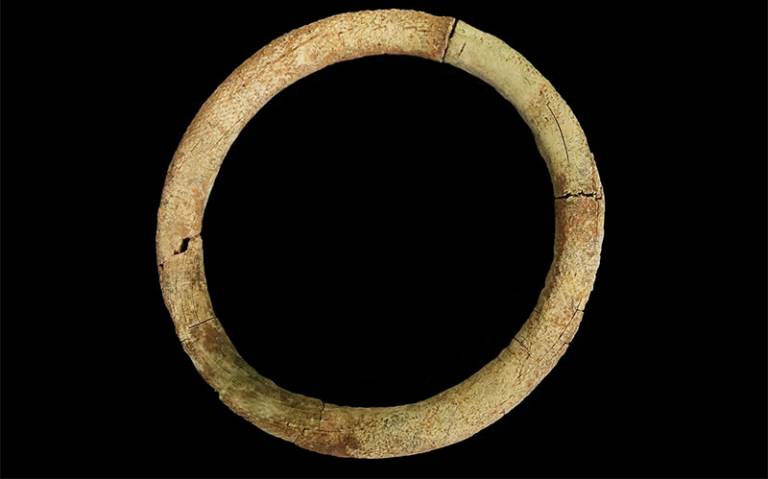Anglo-Saxon grave goods reveal African link
17 April 2023
Collaborative research led by Katie Hemer (UCL Institute of Archaeology) has been featured in Nature Research Highlights this month.

Ivory used for bag rings was imported to England between the 5th and 7th centuries AD. Rings are most frequently found in high-status female graves, and would have been used to secure bags that hung at the waist.
Reconstructions suggest a material bag was attached to the ring so that the ivory was still clearly visible and so may have been as much a status symbol as of practical use.
Archaeologists have long debated the source of this imported ivory, and whether it derived from extant elephant species from Africa (Loxodonta Africana, Loxodonta cyclotis) or India (Elephas maximus), or, whether it came from much older sources, such as mammoth ivory (Mammuthus sp.).
Katie Hemer, with colleagues from the University of Sheffield, the British Geological Survey and the University of Manchester, undertook biomolecular analyses of ivory artefacts from an Anglo-Saxon cemetery context which revealed a link to African elephants, potentially from the East African Rift Valley.
Through a novel approach combining different scientific methods, their research generated high-resolution data that will advance our understanding of natural resource exploitation in the post-Roman world. This work was supported by a grant awarded to Katie Hemer from the Society of Antiquaries of London.
This research has been published recently in the Journal of Archaeological Sciences: Reports (open access) and has been featured in Nature this month.
Read more
Citation
Hemer, K. A., Willmott, H., Evans, J. E. & Buckley, M. J. Archaeol. Sci. Rep. https://doi.org/10.1016/j.jasrep.2023.103943 (2023).
Image
An Anglo-Saxon ornament called a bag ring, which was made from ivory from an African elephant. Image credit: Hugh Willmott
 Close
Close

